City of Rock (AKA "Where the hell are we?")
 Chris Happened to find this site while following a train in Illinois. Why was he following a train? Because Chris likes trains, okay?! This has, however, led me to create the following theory: Trains know where the best places to explore are! A few weekends ago, Chris took me and a couple other adventurers to visit what he called "the huge quarry in Illinois." As we began exploring, I realized that the word huge was not sufficient to describe the vast underground areas of this quarry.
Chris Happened to find this site while following a train in Illinois. Why was he following a train? Because Chris likes trains, okay?! This has, however, led me to create the following theory: Trains know where the best places to explore are! A few weekends ago, Chris took me and a couple other adventurers to visit what he called "the huge quarry in Illinois." As we began exploring, I realized that the word huge was not sufficient to describe the vast underground areas of this quarry.As you approach the quarry in Valmeyer by road, you immediately begin to notice the many large openings in the nearby bluffs. As you b
 egin to see how far this system of openings streches, you get your first hint at how large the areas inside must be. The site has been in use since the early 1900s, when the Missouri Pacific Railroad used the site as an open-faced quarry to obtain rocks for use as railroad ballast. For most of its exsistence, it was operated by the Columbia Stone Company, who is responsible for the vast labrinyth of room-and-pilliar tunnels. In 1948, the Knaust Mushroom company leased 110 acres of the man-made caverns. The temperature and humidity of these underground areas turned out to be perfect for mushroom growth, and at its peak 2 million pounds of mushroom were harvested at this site in just one growing period. Today, a portion of this complex is being use
egin to see how far this system of openings streches, you get your first hint at how large the areas inside must be. The site has been in use since the early 1900s, when the Missouri Pacific Railroad used the site as an open-faced quarry to obtain rocks for use as railroad ballast. For most of its exsistence, it was operated by the Columbia Stone Company, who is responsible for the vast labrinyth of room-and-pilliar tunnels. In 1948, the Knaust Mushroom company leased 110 acres of the man-made caverns. The temperature and humidity of these underground areas turned out to be perfect for mushroom growth, and at its peak 2 million pounds of mushroom were harvested at this site in just one growing period. Today, a portion of this complex is being use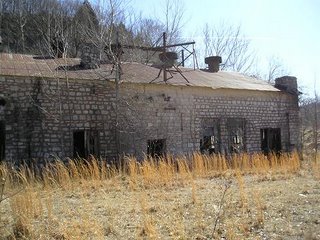 d once again, this time for a cold storage facility. Of the 6 million square feet of underground area, 100 thousand has been turned into what is now known as "Rock City." Though extensive, Rock City encompasses only a small part of the vast man-made cave system.
d once again, this time for a cold storage facility. Of the 6 million square feet of underground area, 100 thousand has been turned into what is now known as "Rock City." Though extensive, Rock City encompasses only a small part of the vast man-made cave system.Our small group of adventurers approached the site from the side that is still abandoned, where I began by checking out one of the small crumbling buildings that sit near the base of the hill. Though small, this building was quite interesting. It still contained many of the old switches and guages. While I never know exactly what these devices once controlled, they always cause me to make my pattented "Oooooh, switches and guages!" face. Something I had never seen before were the makeshift shelters someone had made using old clothes, shoes, and wire frames. At least, I assumed they were shelters or windbreaks of some kind. Whatever they were, they were odd.
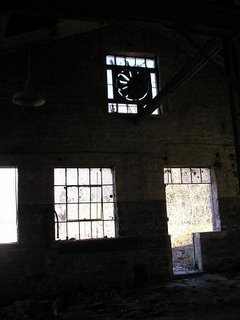
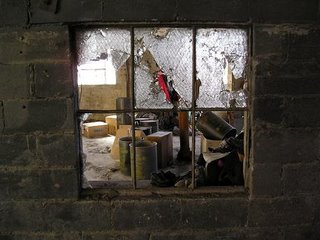

There are many shafts and tunnels leading from the base of the hill and leading deep into it, although most are either dead ends or have now collapsed. There is still one, however, that provides easy access into the upper inside areas of the quarry that would otherwise require some serious hill climbing to reach. I could care less about a tough climb, I just thought it was so cool to be entering the quarry through a tunnel. I'm sure my yelps of excitement were audible to all. We passed through this old tunnel along a path still occupied by some sort of conveyeur. From there, it was only a matter of ascending a few staircases and ladders until we reached the main levels of the caverns.

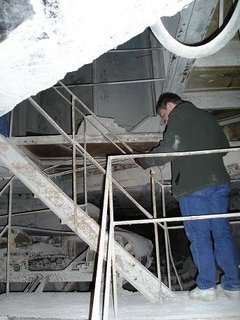
The first areas of the quarry are fairly well lit and open, with light still shining through the large openings on the bluff face. There are many signs that these areas are still frequented, the coolest of which were some ATV tracks that seemed as if they were taken off some "sweet jumps." In these first areas, we found most of the cool items that hinted at the history of the quarry. In many sites we have explored we have found government issued rations, because many of these locations were at one time designated Civil Defense Shelters. This quarry was at one time the largest shelter in Illinois. It is quite evidents, as this was by far the largest stash of these supplies we had ever found. You can also still find the cylindrical tubes that used to contain demolition charges, and many boxes of old core samples. 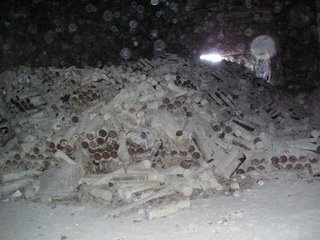
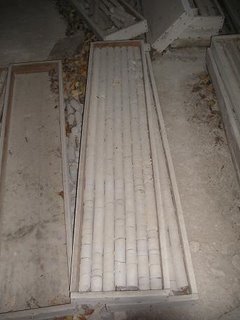

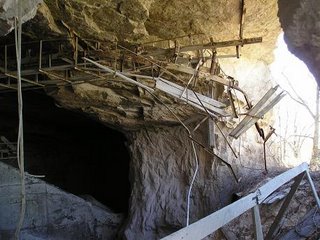
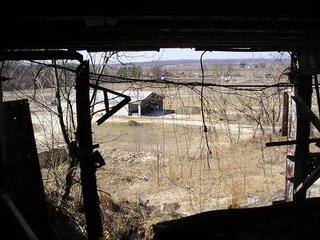
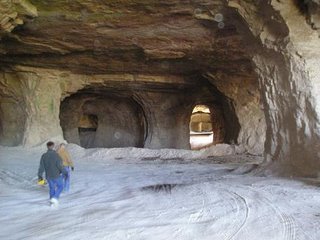
As we began to move further into the hill and farther away from the light of the sun, the caverns became seemingly much larger and more ominous. Many of the lower chambers are flooded, and the group of us spent near an hour attempting to find a dry route through a specific part of the quarry, but were unsucessful. In the pitch blackness of some of these deep parts of the quarry, strange artifacts can still be seen, such as large deflated tubes still attached to the roof of the cave that at one time must have been a part of some air filtration system. We also found a number of spotlights which at one time must have lit the path for vehicles traveling on the many underground roads. After wandering for a few hours, we began to no tice that we were no longer in the forgotten parts of the caverns. I have to admit, it is strange to wander onto a paved road in the middle of a cavern complete with road markings, street lights, and street signs. We had wandered into the Rock City complex, where the cold storage facilites are operated today. These areas offered a much different version of the quarry, complete with loading docks and even underground office buildings! How cool is that?! We were able to wander into one of the office areas because someone was kind enough to leave the door open for us. Whoever designed these areas deserves major props, because the way the rooms used the cave itself as some of the walls and ceilings was quite amazing. In one of the rooms, we even found a large map of the entire complex, which showed us that there was still another entire hill's worth of quarry that we had yet to see. This second hill ended up being much emptier and full of rubble that the areas we had already explored, so we didn't spend that much time there. We left the complex that day covered in dust and sand, using the main road that trucks must use every day of the week when the complex is active. This massive quarry may not be as full of neat little nuances that I enjoy at other sites, but it makes up for that by its size alone. After spending around five hours exploring, I still felt like we had seen only the tip of the iceberg. I'm sure I'll return, some day when I have a lot of extra time.
tice that we were no longer in the forgotten parts of the caverns. I have to admit, it is strange to wander onto a paved road in the middle of a cavern complete with road markings, street lights, and street signs. We had wandered into the Rock City complex, where the cold storage facilites are operated today. These areas offered a much different version of the quarry, complete with loading docks and even underground office buildings! How cool is that?! We were able to wander into one of the office areas because someone was kind enough to leave the door open for us. Whoever designed these areas deserves major props, because the way the rooms used the cave itself as some of the walls and ceilings was quite amazing. In one of the rooms, we even found a large map of the entire complex, which showed us that there was still another entire hill's worth of quarry that we had yet to see. This second hill ended up being much emptier and full of rubble that the areas we had already explored, so we didn't spend that much time there. We left the complex that day covered in dust and sand, using the main road that trucks must use every day of the week when the complex is active. This massive quarry may not be as full of neat little nuances that I enjoy at other sites, but it makes up for that by its size alone. After spending around five hours exploring, I still felt like we had seen only the tip of the iceberg. I'm sure I'll return, some day when I have a lot of extra time.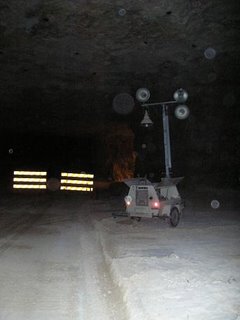


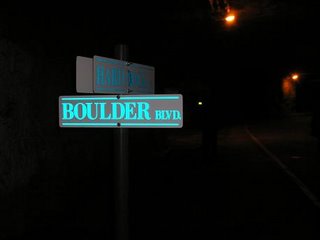
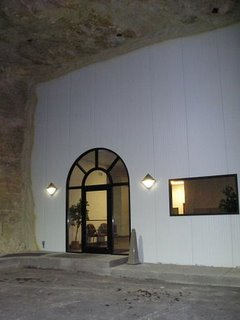
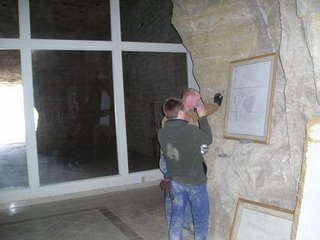


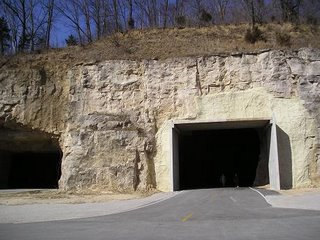
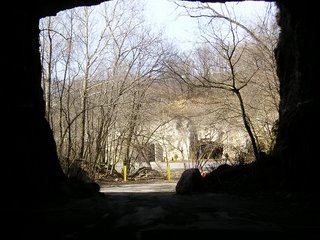

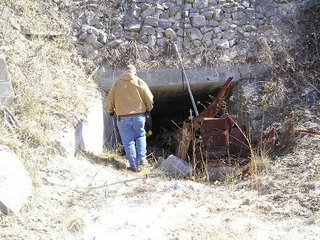
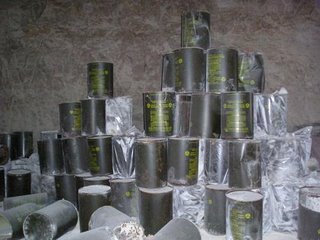

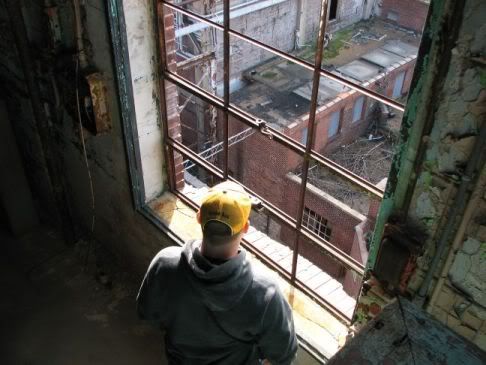

1 Comments:
This reminded me of a place I went on a field trip for an environmental geology class when I was going to Missouri State in Springfield: Springfield Underground.
It's a combination of an underground limestone quarry and an industrial park, with areas that have been mined out being used for offices, warehouse space, and lots of other things (server farms and the like and supposedly, they've got a contract with Homeland Security for a part of it).
I'd suggest giving that a try if you're ever in SGF, but the entire place is pretty much active. We only got in because the prof. was good friends with one of VPs of the company that maintained the entire operation.
Post a Comment
<< Home